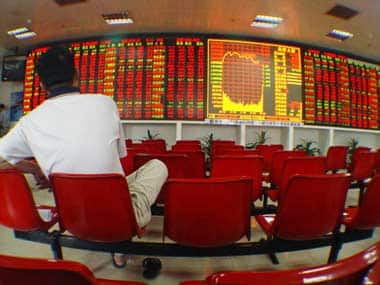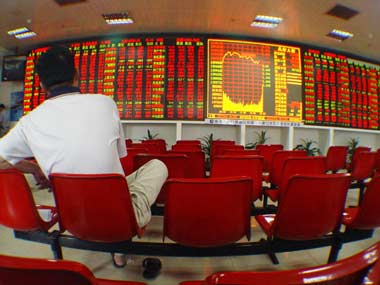When the Sensex and Nifty suddenly tanked yesterday, everybody was thrashing about for explanations. Some saw it as a response to US Fed Chairman Ben Bernanke’s statement of Wednesday, where he seemed to suggest that if the US economic outlook improved, he might bring down the level of bond purchases and reduce money printing. Others saw it as a response to domestic bad news as well - with both State Bank of India and Tata Steel reporting bad results, and Ranbaxy coming under a cloud following a decision of its Japanese promoters to sue the previous management for hiding facts about the company’s problems with the US Federal Drug Administration.
Don’t be fooled. Explanations are what we get when something happens unexpectedly. They are seldom fully valid.
Here are 10 things to remember about stock markets and the explanations given about them.
#1: The three fundamental driving forces of stocks are these: liquidity, liquidity, liquidity. It is liquidity, or lack of it, that drives prices up or down. Liquidity simply means the amount of money available to chase stocks. When the amount falls, markets fall; when it rises, stocks rise. If there are no changes in liquidity, the markets will not move.
[caption id=“attachment_812303” align=“alignright” width=“380”]  Reuters[/caption]
#2: What is true for the market may not be true for individual stocks. If liquidity is what drives entire markets and indices, liquidity varies from stock to stock. What we call fundamentals - a bullish or bearish view of a stock - essentially means that liquidity will change in favour or one stock or the other, assuming the total quantum of money available for investment in stocks remains the same.This is why pension is crucial for market direction. Assuming the total workforce keeps on increasing, the money available for market investment keeps rising, driving up stocks. When populations age, this corpus starts shrinking. This is why Japan stock market has not recovered since the 1990s.
Stock fundamentals create a reasoned climate for changing the direction of liquidity towards (or against) one stock. Fundamentals do not raise prices changes in the direction of liquidity. If people want to sell Tata Steel and buy TCS, it means the liquidity available has changed direction.The market as a whole may not rise in this event driven purely by stock fundamentals.
#3: A corollary of the liquidity paradigm is this: when you are not sure of liquidity, go for stock-specific investment. If we assume that there is always some amount of money going into stocks or between stocks, when liquidity stagnates or falls, people will opt for what they think is stocks with sounder fundamentals. This changes liquidity in favour of some sectors, and away from others. This is also why some stocks are called defensives (food, FMCG) and other growth stocks (which respond to broader liquidity conditions faster).
#4: Macroeconomics is important for broad movements. The explanation that Ben Bernanke’s statement triggered the selloff yesterday has validity only in the context of liquidity. If he stops bond buying when the economic outlook improves, it means less injection of artificial liquidity, and less money available for boosting asset prices. However, there is also the counter-point: since Bernanke will reduce bond-buying only if the US economic outlook improves, the liquidity-driven stock surge will have to look more closely at industry fundamentals to decide where to invest. In short, artificial liquidity will fall, and long-term liquidity will rise as the economy generates more jobs, more incomes, and more money for investment.
#5: Liquidity is impacted by the market’s relative preferences for stocks based on their future outlook - as determined by the market’s influencers. Sectors, stocks or an entire genre of stocks that are unrelated to each other - as in large-caps, mid-caps, etc - can rise or fall depending on the flavours of the season. During volatile and uncertain times, large caps may be preferred; but in more settled times, mid- and small-caps may be the talk of the town. But it is liquidity that matters ultimately.
#6: Short-term market movements are less reliable than long-term ones. What Ben Berkanke or P Chidambaram say about markets today will impact short-term movements - Chidambaram, for example, claimed yesterday that the markets had read Bernanke wrong - but the market’s direction is finally determined by what people do rather than what they say in the long-term. Stocks rise and fall everyday - but this happens because people move from one stock to another when overall liquidity - money chasing stocks - is the same. This is why at constant liquidity, a flood of IPOs or disinvestment may tank markets - people sell the stocks they hold to buy the new equity. This is also why Chidambaram is keen to tell the markets that they misread Bernanke.
#7: The stock market is impacted by other asset markets, too. Investors put their money into a variety of assets - from stocks to commodities to real estate to bonds or currencies whatever - so when real estate is falling, liquidity may shift to stocks or bonds or other assets that investors think will rise or fall less. The recent fall in gold may have helped trigger the shift of liquidity from gold to bonds or stocks. Money flows from one asset class to another depending on relative outlook. However, if there is a general surge in liquidity, all assets could surge simultaneously.
#8: Interest rates and stocks have an inverse relationship. When rates fall, stocks which represent better cash flows tend to get rerated upwards. This is why the markets watch the RBI’s monetary policy show closely.
#9: The ultimate triggers are greed and fear: markets fall when fear reigns; they rise when greed hold firm. Right now, most markets are ruled both by fear and greed - a sort of midway point. They could turn either way depending on whether economic optimism returns or ebbs. The short-term fear is about a reduction is easy money - which is why Bernanke’s statement roiled the markets. But if growth prospects improve, greed too could return.
#10: Don’t depend too much on expert advice. The only people who make big money on the markets are those who take the trouble to learn themselves. The rest are cannon fodder for the experts. I am not saying you can’t benefit from expert advice, but the truth is even experts can’t know how the markets will behave beyond the short-term. If they did, they would not put this information to benefit you when they can make use of it themselves. Altruism is in short supply when it comes to market advice.


)
)
)
)
)
)
)
)
)



